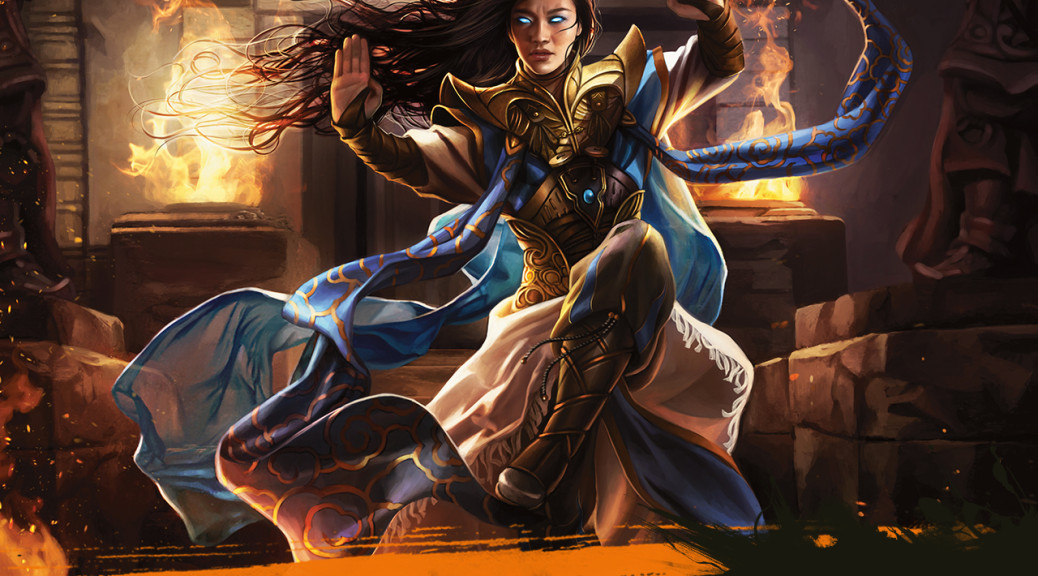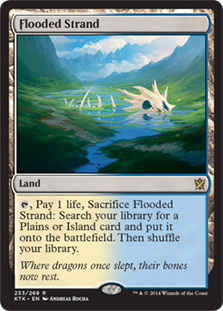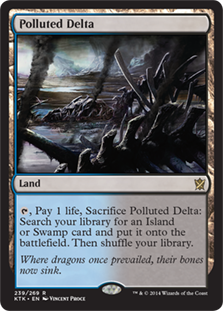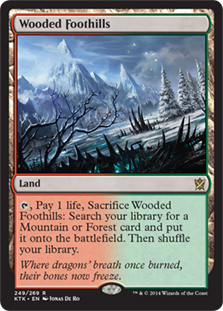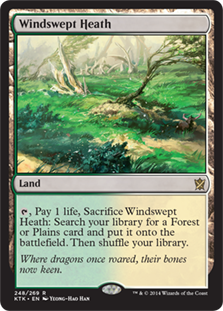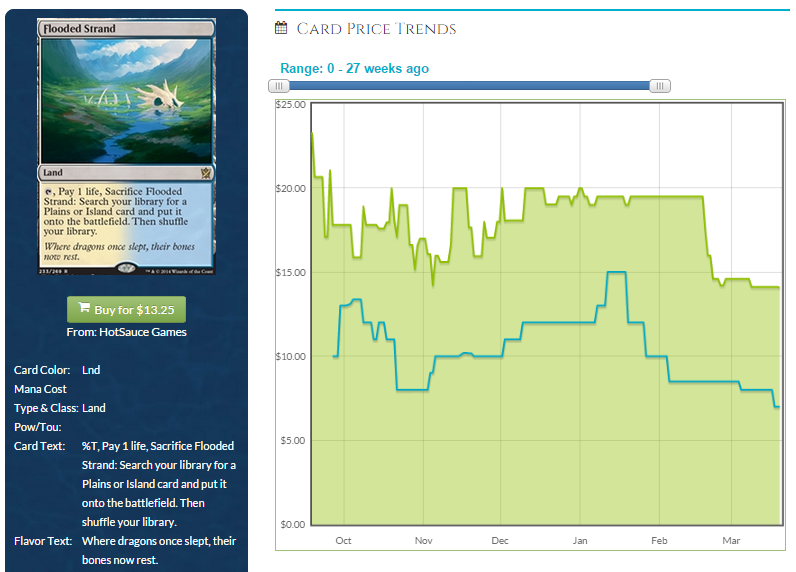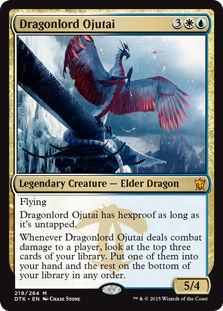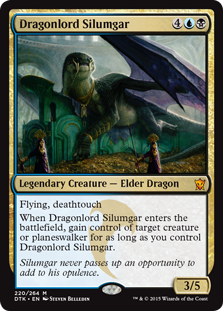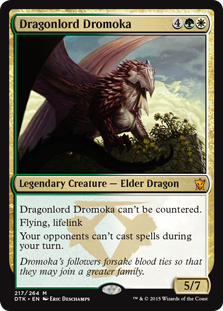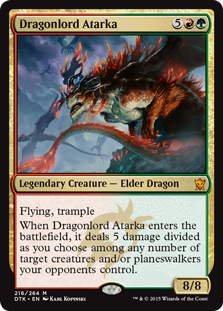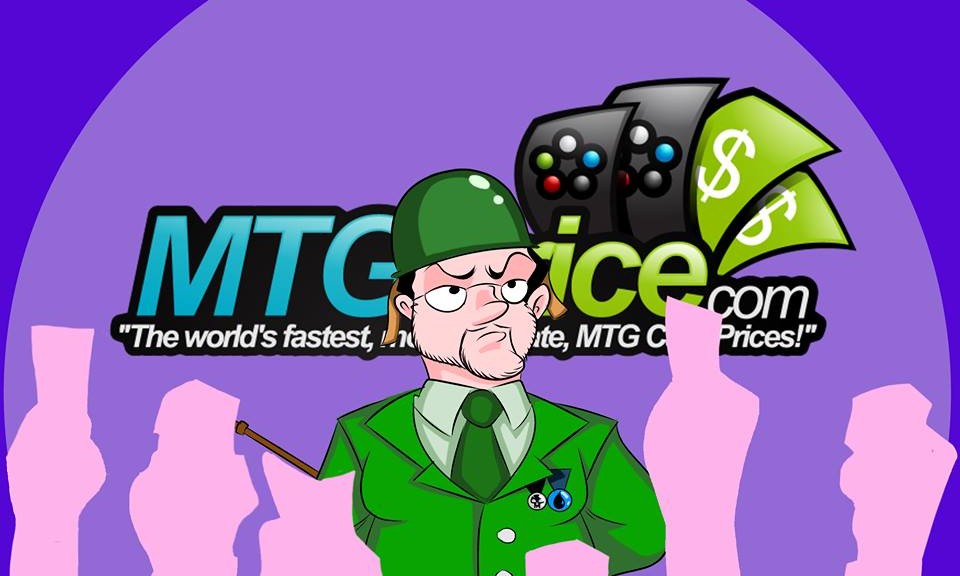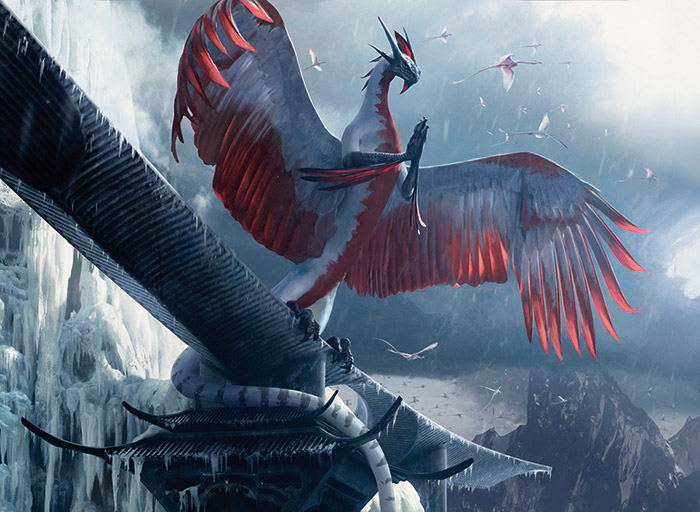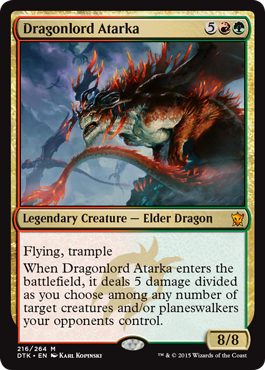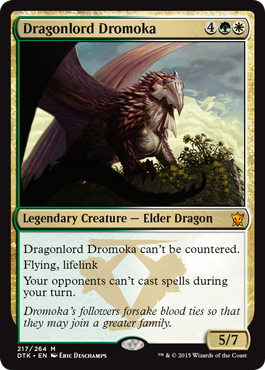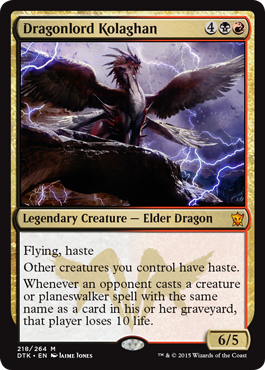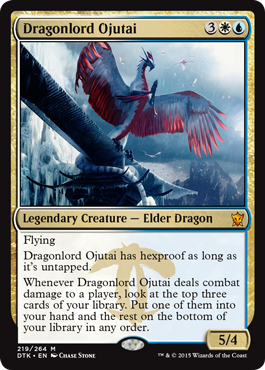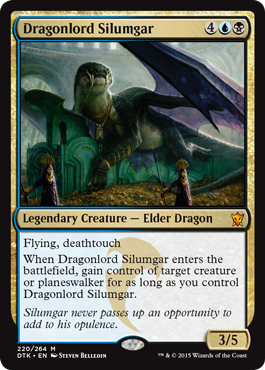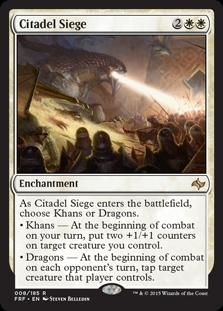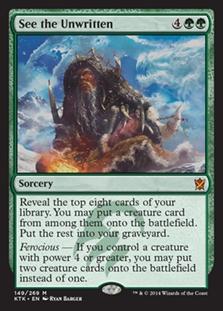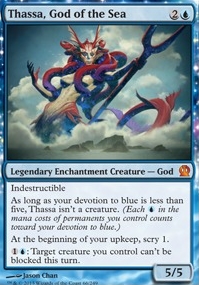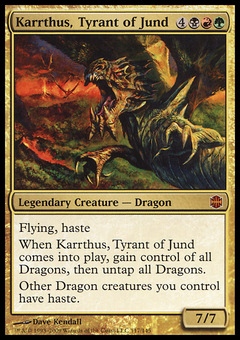By Guo Heng
The clock struck twelve midnight. The sound of hundreds of Dragons of Tarkir booster packs being cracked rippled through the room as players began to open the contents of their clan packs. The first wave of Tarkir dragons have arrived. You join the throngs of Magic players around the world in being the first to get a taste of Dragons of Tarkir.
As you open you Ojutai clan pack, you were mildly stoked that your seeded booster rare is Ojutai’s Command. Not exactly an expensive rare nor the Elder Dragon you were looking to use as a Commander, but at least its playable in your sealed pool.
You pop open your first Dragons of Tarkir pack. Obscuring Aether. To the bulk stack. Second pack. Dragonlord’s Perogative. Not exactly a money card, but it may be playable in your pool. Third pack. Volcanic Vision. Dammit, is this going to be another sealed pool with not a single money card? You began to wonder if you should have just saved your money to buy singles instead.
Of course you would not open money cards. The odds are always against you when you are opening packs. If they are not, everybody would be cracking packs instead of buying singles. You berate yourself for that lapse in judgement. Oh well, at least you are supporting your local game store.
As you crack your fourth and last Dragons of Tarkir booster pack, you decided to slowly reveal the card on the rare slot. You slide the card to unveil its top left corner. It’s a gold card. Could it be another Command?
You slide it a little further to reveal the mana pips. Blue and white. Could it be another Ojutai’s Commande? Or perhaps a Pristine Skywise, who would be sweet in your Ojutai deck. You take out the card.
Bam. It’s this bad girl:
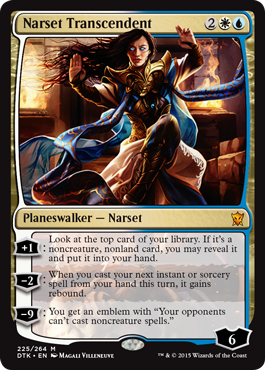
You are overjoyed. It looks like you would not only make back your prerelease entry fee, but you have a good chance at taking down the prerelease too, having opened one of the best bombs in the set.
The question that pops into your head right now is this: Do you keep your Narset Transcendent after the prerelease, or do you trade her off at the next available opportunity?
What to Do With My Narset Transcendent?
A question that inadvertently pop up the week after a prerelease is “Do I keep the chase mythic planeswalker I opened at my prerelease?”
I wrote this piece as an answer to the question that would undoubtedly arise regarding Narset Transcendent, currently the most expensive card in Dragons of Tarkir at $42. However, the content that follows would also apply for whatever chase card you pop this weekend that you think are overpriced and would like to get rid of.
First off, congratulations if you are one of the few lucky prereleasers to open a Narset Transcendent. If you are planning to play with her frequently over the next month or so, it would not hurt to just keep that copy for your own use. Look at your prerelease fortune as having saved you some cash off your quest to acquire the Narsets you need for your deck.
Personally, I fall under this camp. I am looking forward to get back into control and there are a couple of brews I am keen building for a PPTQ next week: William Jensen’s Narset Control or Shaheen Soorani’s Esper brew, which I would probably end up building. Sweet as Jensen’s build look, I am not willing to splash for four Narset Transcendents on release weekend. Plus Soorani’s deck runs Dragonlord Ojutai as a finisher, a card I am really bullish on.
However if you do not plan on playing with her right now, the best thing to do is to trade her off as soon as possible. While the planeswalker tax may not be as ubiquitous as before, Narset Transcendent does not have the makings of Ugin, the Spirit Dragon, who after nearly two months, is still $5 – $7 more than his preorder price.
Narset is undoubtedly a powerhouse in Standard, but multicolored planeswalkers have a lower theoretical ceiling compared with their single-colored counterparts. Call it the multicolored ceiling, Magic Finance’s variant of the glass ceiling.
Narset’s situational, build-around-me abilities do her price no justice as well. They limit her potential homes in all formats and as an extension her price.
Those factors combined convinced me that Narset is overpriced right now at $42 and if you have no intentions of running decks that would want to play her, it may be best to cash out on her inflated value.
So what cards are good pick-ups to trade your Narset Transcendent into?
Khans of Tarkir Fetchlands
Flooded Strand: $14
Polluted Delta: $14
Windswept Heath: $11
Wooded Foothills: $10
Bloodstained Mire: $9
We have hit peak supply for Khans of Tarkir. In a week’s time, the supply of Khans of Tarkir would grind to a trickle. I can’t say for sure if we are at the price bottom for the the Khans fetches as the Return to Ravnice shocklands bottomed out only at May and the Theros temples during July and AugustThe difference of a few months could also be attributed to the different draft structures of the sets.
However, the fetchlands should be pretty damn close after their dip in the middle of February.
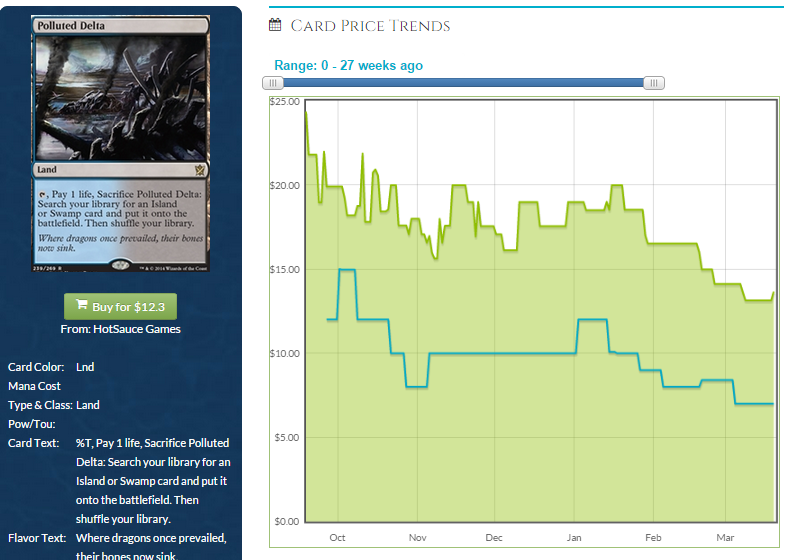
If you have yet to complete your playsets of fetchlands, there are not many things better to trade your overpriced Narset Transcendent into than helping you complete your playsets of fetches.
If you are looking for fetches as long-term investments, the appreciation you stand to gain from the fetches, especially the blue ones, far outweigh that of Narset Transcendent.
Seeing that we are at the peak supply of Khans of Tarkir, what other Khans of Tarkir cards are worth picking up with your Narset Transcendent?
Foil Non-planeswalker Narset
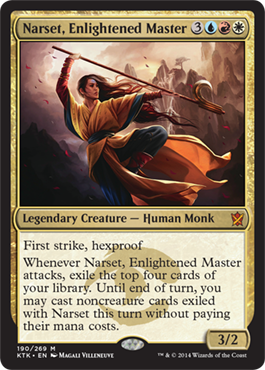
Since the release of Khans of Tarkir, Narset, Enlightened Master quickly rose among the ranks of the Khans to become one of the most popular commander (mirroring her rise to prominence among Ojutai’s clan in the new timeline. Vorthos alert).
It’s easy to see why: in a format that revels in resolving grand spells with prohibitively high mana cost, the possibilities are endless for a card that allows you to play spells without paying for them. It’s even better when you can play up to four of them.
Taking extra turns is one of the most popular thing to do with Narset. The Beacon of Tomorrows spike last November was attributed to Narset’s popularity. Narset also cheats in planeswalkers, which mean players could jam in all the best white, blue or red planeswalkers, including the new kid dragon planeswalker on the block, Ugin. Taking extra turns and manifesting a board of planeswalkers at the same time is one of the most fun thing to do in Commander, for the Narset player at least. Personally, I prefer to Long-term Plans for an Omniscience with my Narset, Enlightened Master trigger on the stack.
Narset has also been gaining traction in the Duel Commander scene.
Foil Narset, Enlightened Master is only $12 at the moment. With her popularity as a commander, foils at $12 would not be a bad investment. It definitely has more room to appreciate compared with Narset Planeswalker at $42.
Speaking of Khans…
Foil Anafenza, the Foremost
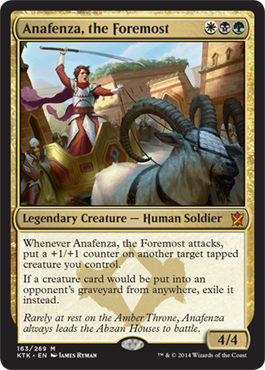
Now this is a more controversial pick. $14 seems steep for foil Anafenza, the Foremost. But I think she has a lot of potential to grow for the following reasons.
Anafenza is an immensely popular leader in Tiny Leaders. The majority of Abzan decks run Anafenzas their leader. Her +1/+1 counter has a wide range of synergies, and her second ability hoses a myriad of other popular leaders like Alesha, Who Smiles at Death and Grenzo, Dungeon Warden (running Anafenza against them felt close to cheating. True story).
On top of her popularity in Tiny Leaders, Anafenza is also the most played aggro commander in Duel Commander.
On the other hand, since Birthing Pod got the axe in Modern, Anafenza had all but disappeared from the Modern scene. Nevertheless, Tiny Leaders and Duel Commander demand should be sufficient to boost her price beyond her current $14. While she would not hit the $60s heights of foil Zur the Enchanter (whose foil price continued on a gradual hike even after Zur was banned in Duel Commander) as the supply of Khans of Tarkir is substantially higher than Coldsnap’s, it would not be hard to imagine foil Anafenza to hit at least $30 in the long run, especially when she has higher demand than Zur.
Foils Grand Arbiter Augustin IV, the most popular control commander for Duel Commander on top of being a popular fun police casual commander spiked up to $75 before he was reprinted in Modern Masters.
$14 is a safe entry point for foil Anafenza, the Foremost as her foil price is likely to be remain around that through her life in Standard, buoyed by tremendous casual demand.
Foil Dragonlords
Courtesy of the seeded prerelease packs, there will be plenty of players opening foil Dragonlords during the prerelease. As of writing, foil Dragonlord prices have yet to settle. Major retailers either do not stock them yet, or have sold out of them and eBay winning bids ranged from $10 to $20 per Dragonlord.
With the exception of Dragonlord Kolaghan (and I may even be wrong about foil Kolaghans), I would be happy to trade my $42 Narset Transcendent for a couple of foil Dragonlords.
I do not know if that exchange would yield profit in the short-term, foils of Dragonlords who does not see Standard play within the month may even drop in price when more Dragons of Tarkir hit the market. However, Narset Transcendent’s short and long-term trajectory are very likely to be downwards and even though foils of the Dragonlords-not-played-in-Standard may tank in the short run, you can bet they would be spike in the long run driven by casual and Commander demand, as I’ve advocated in my analysis of the Dragonlords. After all, they are the only foil Elder Dragons besides the From the Vaults: Dragons Nicol Bolas.
Finally, you reach for your single Fate Reforged pack, still giddy from ripping that Narset Transcendent. You have already covered your prerelease entry cost and ‘made a profit’. It doesn’t matter what you get in your last pack.
You tear the Fate Reforged pack open with abandon. Straight to the rare slot, no slow reveal this time.
It’s a foil Ugin, the Spirit Dragon.
